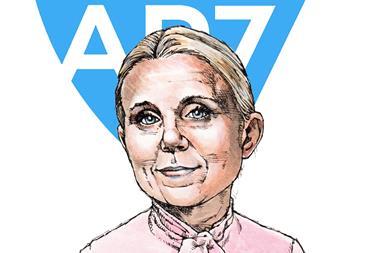SWEDEN - Första AP-fonden (AP1), the First Swedish National Pension Fund, has reported a net first-half return of 6.7%, following the implementation of a new investment model.
Latest figures from AP1's interim report showed the value of the scheme increased by SEK9.8bn (€965m) to SEK181.4bn in the first six months of 2009, as the net 6.7% translated into investment income of around SEK11.5bn.
However, AP1 noted that for the first time since its inception in 2001, the Swedish pension system as a whole posted a net outflow which reduced the fund's net assets by SEK1.7bn.
It attributed this to the fact that the greater number of 'baby boomers' are starting to retire, and warned that according to the Swedish Social Insurance Agency (SSIA) contribution assets will continue to deteriorate until 2020, before becoming positive again in the mid-2040s.
The improvement in the investment performance against the -8% return in the same period in 2008 follows a change in the asset management model adopted by AP1 earlier in the year, as it switched from a focus on active management to strategic allocation.
The fund reorganised its operations iIn February to shift its focus to absolute return rather than returns in relation to a benchmark index. This resulted in four investment units all contributing to allocation decisions alongside their own management mandates, in an effort to achieve a goal of a "total annual return after expenses of 5.5% on the total portfolio measured over rolling five-year periods". (See earlier IPE article: Jobs go as AP1 alters asset management model)
At the end of June, 55.9% of net assets were invested in equities, 37.8% in fixed income, 5.1% in alternatives and the remainder in cash and foreign exchange, however changes to the asset management model are expected to continue into the autumn.
Johan Magnusson, managing director of AP1, stated in the report: "We will supplement the portfolio with international real estate and exploit the potential for opportunistic investments. The new investment model does not entail any change in our ambitions for alternative investments. Our cautious private equity strategy, to gradually increase our exposure to around 5% of the total portfolio, stands firm."
Figures revealed the total equity portfolio returned 10.7%, or SEK 10bn, with Swedish equities returning 23.3%, emerging market stocks producing 32.7% and foreign market shares returning 5.4%.
Fixed income investments, which include index-linked, nominal Swedish and non-Swedish bonds, returned 3.1% while the alternative investments portfolio made up of real estate, private equity and hedge funds was the only negative performer with a return of -4.4%.
"The new investment model gives us greater scope to focus on the increasingly important asset allocation and better opportunities - with a long-term perspective, commitment and cost-efficient management - to create high returns for current and future pensioners," added Magnusson.
If you have any comments you would like to add to this or any other story, contact Nyree Stewart on + 44 (0)20 7261 4618 or email nyree.stewart@ipe.com












No comments yet